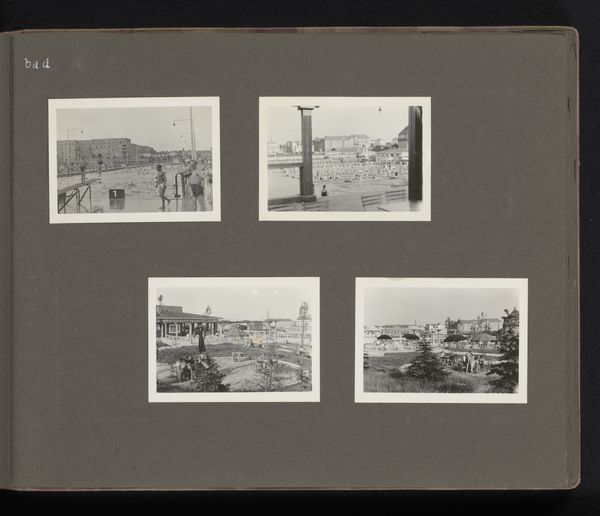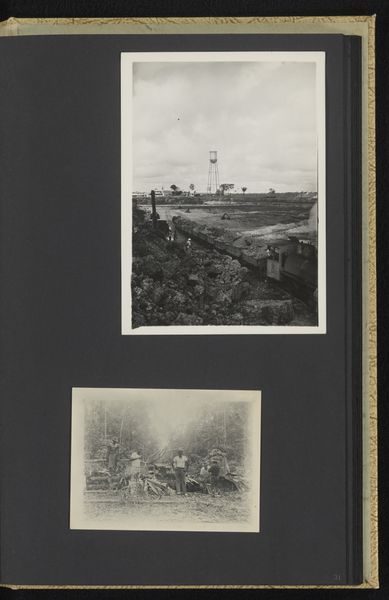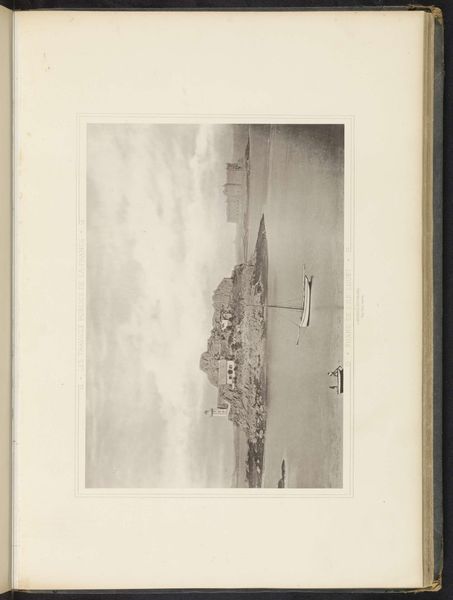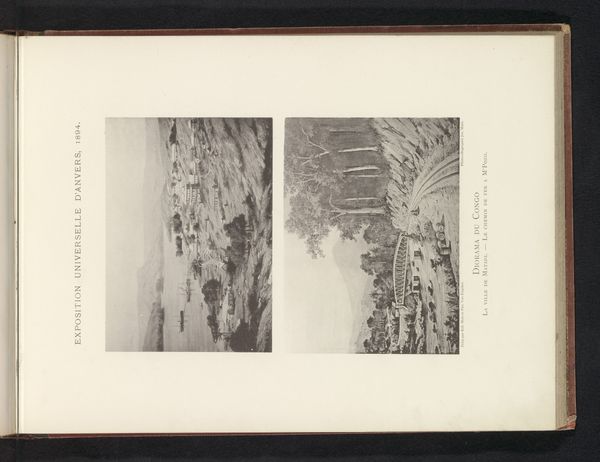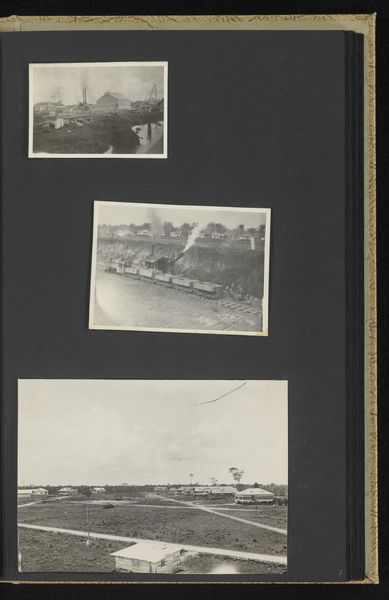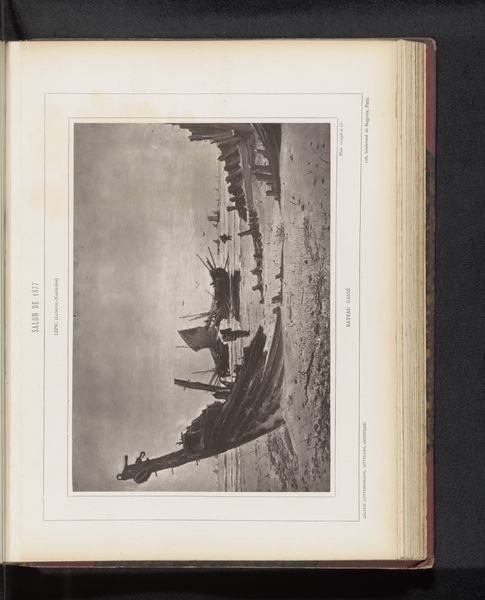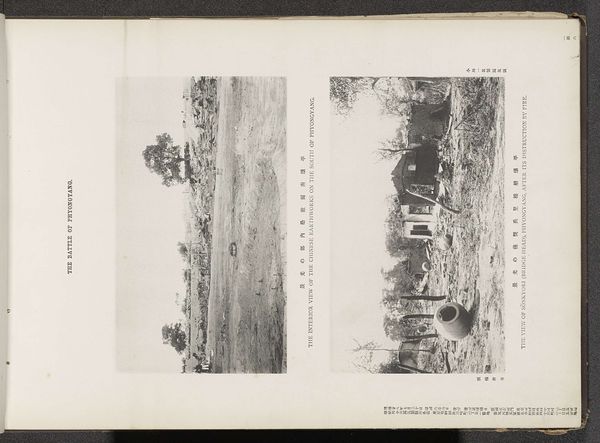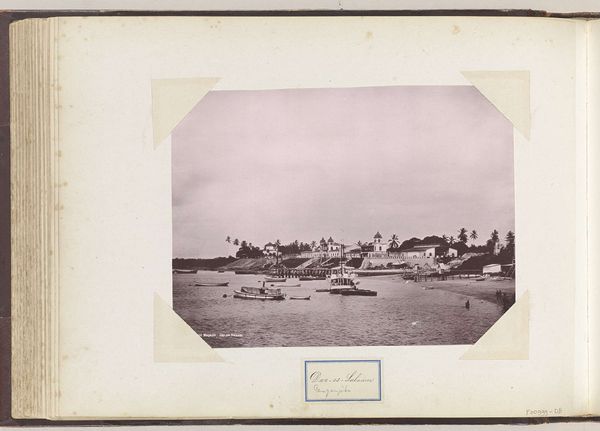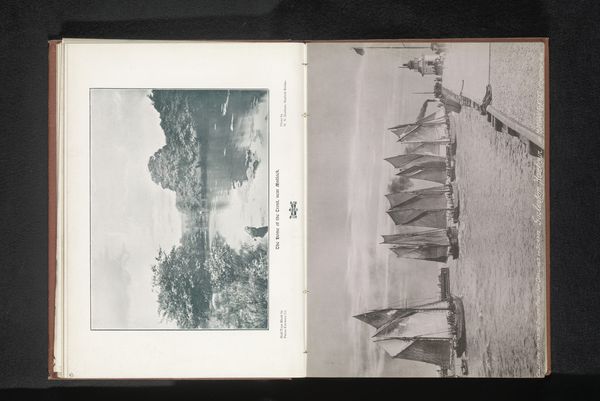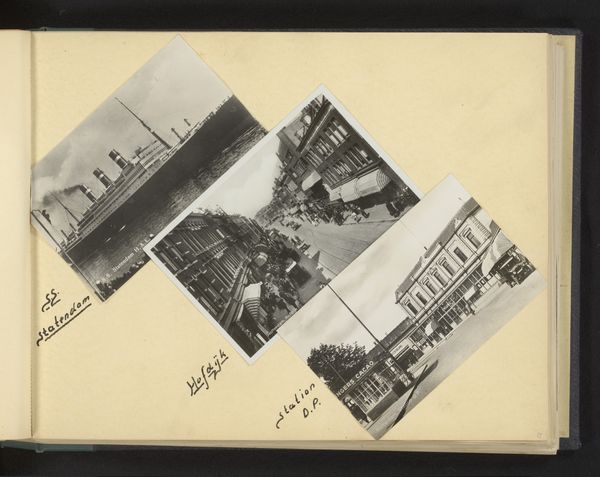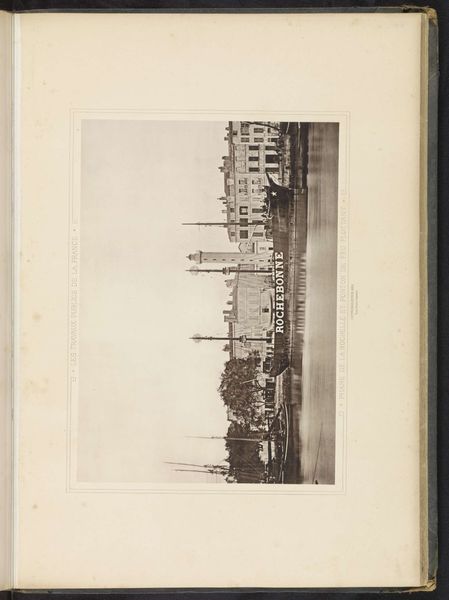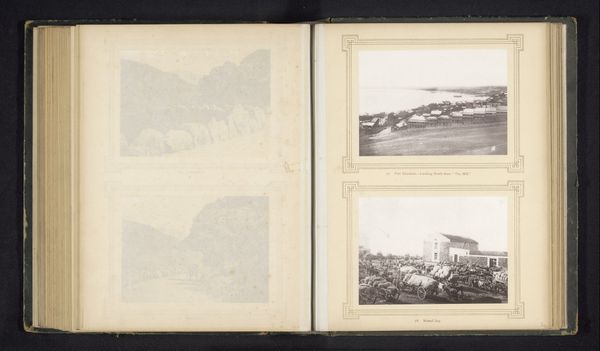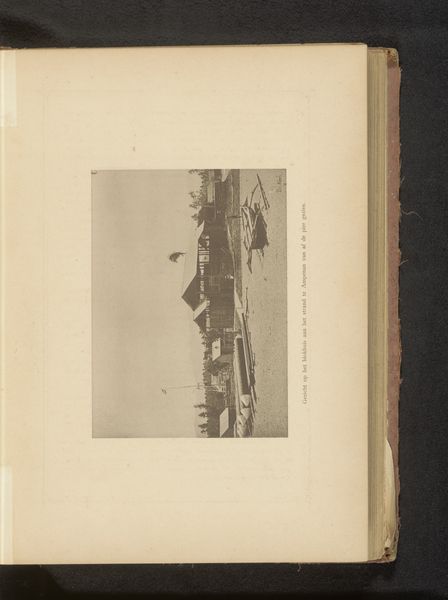
West Street in Durban met winkels, paardenkoetsen en karren c. 1880 - 1900
0:00
0:00
photography
#
landscape
#
street-photography
#
photography
#
cityscape
Dimensions: height 160 mm, width 205 mm
Copyright: Rijks Museum: Open Domain
Curator: Looking at this scene, I immediately notice the rigid geometry of the architecture contrasted against the seemingly disorganized hustle and bustle of daily life in the street. Editor: Today, we’re looking at a photograph attributed to Benjamin William Caney, titled "West Street in Durban met winkels, paardenkoetsen en karren," dating from around 1880 to 1900. Curator: There’s a sense of modernity emerging from the architecture that the slower rhythm of the horse-drawn carts and pedestrians does little to mask. I think it is worth asking, who had the privilege to participate in and witness such modern growth, and who was actively being excluded. Editor: I am more struck by the linear arrangement—the street receding into the distance, the buildings standing at attention along its sides. Even the clouds participate in this perspective exercise. It feels almost calculated, a conscious attempt to create a sense of depth. Curator: Caney captured Durban in a crucial period. Thinking about photography’s early role in colonialism, documenting and often exoticizing newly "discovered" landscapes, Caney's view is a document in the history of how urban life in Durban took shape at the crossroads of British colonialism and Zulu society. The presence of both local people and what look to be colonizers in the scene certainly prompts further inquiry on this topic. Editor: Yes, but even within the monochromatic palette, the play of light and shadow creates a tangible texture—the dust on the road, the hard lines of the buildings. Note also how the lines of the architecture almost act as vanishing points that disappear somewhere off to the left in the horizon. Curator: To reflect on the long-term implications of that vanishing point and where that ultimately led society, it also gives us clues about that colonial history that should prompt self-reflection. Editor: Perhaps it is time we conclude, though it feels like our very different takes have opened interesting and vital new views into this piece. Curator: Yes, I would also say that exploring these complexities is absolutely essential in how we analyze art’s reflection on history, class, and colonialism, especially as an active means for social consciousness.
Comments
No comments
Be the first to comment and join the conversation on the ultimate creative platform.
